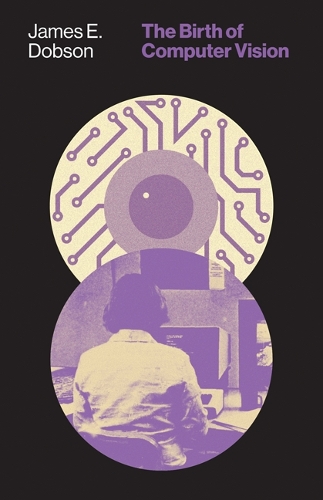
The Birth of Computer Vision
(Paperback)
Available Formats
Publishing Details
The Birth of Computer Vision
By (Author) James E. Dobson
University of Minnesota Press
University of Minnesota Press
11th July 2023
United States
Classifications
General
Non Fiction
History of engineering and technology
Digital and Information technology: general topics
Pattern recognition
Computer vision
006.3709
Physical Properties
Paperback
224
Width 140mm, Height 216mm, Spine 13mm
340g
Description
A revealing genealogy of image-recognition techniques and technologies
Todays most advanced neural networks and sophisticated image-analysis methods come from 1950s and 60s Cold War cultureand many biases and ways of understanding the world from that era persist along with them. Aerial surveillance and reconnaissance shaped all of the technologies that we now refer to as computer vision, including facial recognition. The Birth of Computer Vision uncovers these histories and finds connections between the algorithms, people, and politics at the core of automating perception today.
James E. Dobson reveals how new forms of computerized surveillance systems, high-tech policing, and automated decision-making systems have become entangled, functioning together as a new technological apparatus of social control. Tracing the development of a series of important computer-vision algorithms, he uncovers the ideas, worrisome military origins, and lingering goals reproduced within the code and the products based on it, examining how they became linked to one another and repurposed for domestic and commercial uses. Dobson includes analysis of the Shakey Project, which produced the first semi-autonomous robot, and the impact of student protest in the early 1970s at Stanford University, as well as recovering the computer visionrelated aspects of Frank Rosenblatts Perceptron as the crucial link between machine learning and computer vision.
Motivated by the ongoing use of these major algorithms and methods, The Birth of Computer Vision chronicles the foundations of computer vision and artificial intelligence, its major transformations, and the questionable legacy of its origins.
Cover alt text: Two overlapping circles in cream and violet, with black background. Top is a printed circuit with camera eye; below a person at a 1977 computer.
Reviews
"A key technology of our time, computer vision is embedded in both our professional and everyday lives in numerous waysfrom helping doctors diagnose diseases to enabling organizations to obtain accurate information about remote natural disaster zones and refugee camps to allowing billions of people to capture better images with their phone cameras. Focusing on the United States from the 1950s to the 1970s, James E. Dobson offers the first book tracing the development of computer vision. Combining historical research and theoretical analysis, The Birth of Computer Vision is an invaluable contribution to the fields of media theory, software studies, and algorithm studies."Dr. Lev Manovich, author of Cultural Analytics
"In this timely and eye-opening book, James E. Dobson provides a penetrating analysis of the opportunities and challenges of facial recognition and other computer vision technology by excavating its formation from the sediment of history, tracing its connections to the military industrial complex of the Cold War, and critically examining the notable successes and failures of embryonic research efforts and prototypes."David J. Gunkel, author of Deconstruction
Author Bio
James E. Dobson is assistant professor of English and creative writing and director of the Institute for Writing and Rhetoric at Dartmouth College. His most recent books are Critical Digital Humanities: The Search for a Methodology and Moonbit.
